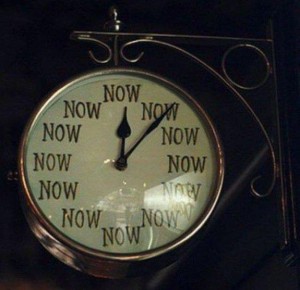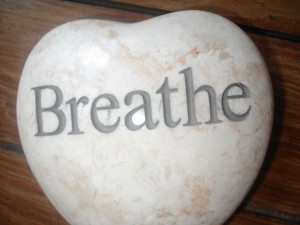 A friend recently asked me if I could give her some advice about mindfulness and meditation. It’s something I’ve been meaning to share for quite a while since practicing mindfulness has had an incredible impact on my wellbeing.
A friend recently asked me if I could give her some advice about mindfulness and meditation. It’s something I’ve been meaning to share for quite a while since practicing mindfulness has had an incredible impact on my wellbeing.
In 2011, I was diagnosed with mental health conditions characterised by significant mood changes that can spiral out of control if not managed properly, causing devastation for the sufferer and for those around them. My therapist at the time worked with me using a technique called Dialectal Behavioural Therapy, which incorporates the massively important elements of Eastern Zen and Western contemplative practices. This gave me the skills I needed to catch my impulses in time and stop unhealthy mood patterns from gaining momentum.
I have been interested in meditation for years, but was only ever able to reach that wonderful state of peacefulness occasionally and even then it was through guided meditations and recorded NLP sessions. The therapeutic work I did equipped me with some crucial information that allowed me to access that state much more frequently. I have to emphasise at this point that the technique takes practice and there are many different approaches, but the basic premise is this: all we have is this moment. Anything that exists outside of it resides only in our minds.  If we can ground ourselves in the moment we have an anchor that supports our ability to concentrate on our experience of the present. It focuses the mind and allows us to apply ourselves fully to whatever we are doing, making our actions much more effective. But I’d be going completely against the fundamental philosophy behind mindfulness practice if I were to say that its main benefit was an increase in productivity. For me the greatest impact was on my sense of peace and contentment, no matter what was going on around me. In this day and age, our constant drive to get things done and achieve more in less time is actually what restricts us from feeling happy.
If we can ground ourselves in the moment we have an anchor that supports our ability to concentrate on our experience of the present. It focuses the mind and allows us to apply ourselves fully to whatever we are doing, making our actions much more effective. But I’d be going completely against the fundamental philosophy behind mindfulness practice if I were to say that its main benefit was an increase in productivity. For me the greatest impact was on my sense of peace and contentment, no matter what was going on around me. In this day and age, our constant drive to get things done and achieve more in less time is actually what restricts us from feeling happy.
 So how do you practice it? The approach that works best for me revolves mostly around breathing. Many of us have become so frantically caught up in the doing of everyday life that we pay little or no attention to the basic processes of being. Much of the time, we don’t even stop long enough to take a proper, full breath! The importance of breath work has nothing to do with making time so you can ‘stop and smell the roses’ – it’s so much more than that.
So how do you practice it? The approach that works best for me revolves mostly around breathing. Many of us have become so frantically caught up in the doing of everyday life that we pay little or no attention to the basic processes of being. Much of the time, we don’t even stop long enough to take a proper, full breath! The importance of breath work has nothing to do with making time so you can ‘stop and smell the roses’ – it’s so much more than that.
- To begin, make sure you’re sitting or lying in a comfortable position. Pay attention to your breathing. For me this can mean simply saying in my own mind, ‘I breathe in… I breathe out’ repeatedly. Or I might notice the way my body moves when I breathe. Is it my chest or my stomach that comes out when I take a breath? Whatever comes to mind is okay – there is no wrong way to do this.
- Focus on prolonging each breath, and if possible push out your stomach instead of the chest on the ‘in’ breaths.
- Move your attention now to the relaxation of each of your muscle groups. Relax the muscles of your face, neck and shoulders. Relax your chest and stomach muscles. Feel the muscles in your back relax. Your hips, thighs, knees and calves… your ankles and feet; all are relaxed. Again, even just saying these phrases in your mind is all you need to focus your attention. By this point I usually find the deep breathing has become easier, and I notice that my breaths feel like they do just before I fall asleep.
- Become aware of what is happening both in and outside of your body; muscle tics, hunger, digestion… the temperature of the room perhaps, the noises you can hear, smells – even the aches and pains if they’re there.
- Listen to your thoughts. What is going through your mind? Notice how your thoughts affect your body.
 The last two steps usually have the most noticeable impact for me. As I’m interchanging focus between mind, body and my immediate environment I suddenly feel a rush of awareness. It is a physical feeling too, as if I am simply floating. Over time, I realised that this rush always coincides with a movement in my eyes behind the lids towards the forehead. This is where the pineal gland, or ‘third eye’ resides, and some have described the phenomenon as an ‘activation’ of the pineal gland.
The last two steps usually have the most noticeable impact for me. As I’m interchanging focus between mind, body and my immediate environment I suddenly feel a rush of awareness. It is a physical feeling too, as if I am simply floating. Over time, I realised that this rush always coincides with a movement in my eyes behind the lids towards the forehead. This is where the pineal gland, or ‘third eye’ resides, and some have described the phenomenon as an ‘activation’ of the pineal gland.
I am at this point in a state of peace and complete calm. I can follow my thoughts and senses wherever they may go, without judgment or expectation. It took me a lot of practice to be able to access this ‘floating’ state consistently and purposefully, so don’t be surprised if this doesn’t happen immediately for you. Achievement of some sort of spiritual rush is in fact beside the point, which is to simply to be aware, and to pay attention to what you notice – that is all.
When I first began practising mindfulness, I found it difficult to sit still. Once I’d mastered that, I had to work on the breathing – it’s surprising how much practice it can take just to breathe properly! The challenge for me at this stage is learning how to stay in that place of floating contentment. That’s because it’s in this state that wonderful ideas come to me; I feel so connected to my experience that I get too excited and want to start doing instead of being again. Suddenly I feel creative. I also tend to discover solutions to dilemmas or difficult problems, and I can’t help but want to act on them. But again, this is ok – the process of mindfulness should not be a lesson in making yourself go one way or another; it’s just about getting on the ride and seeing where it takes you.